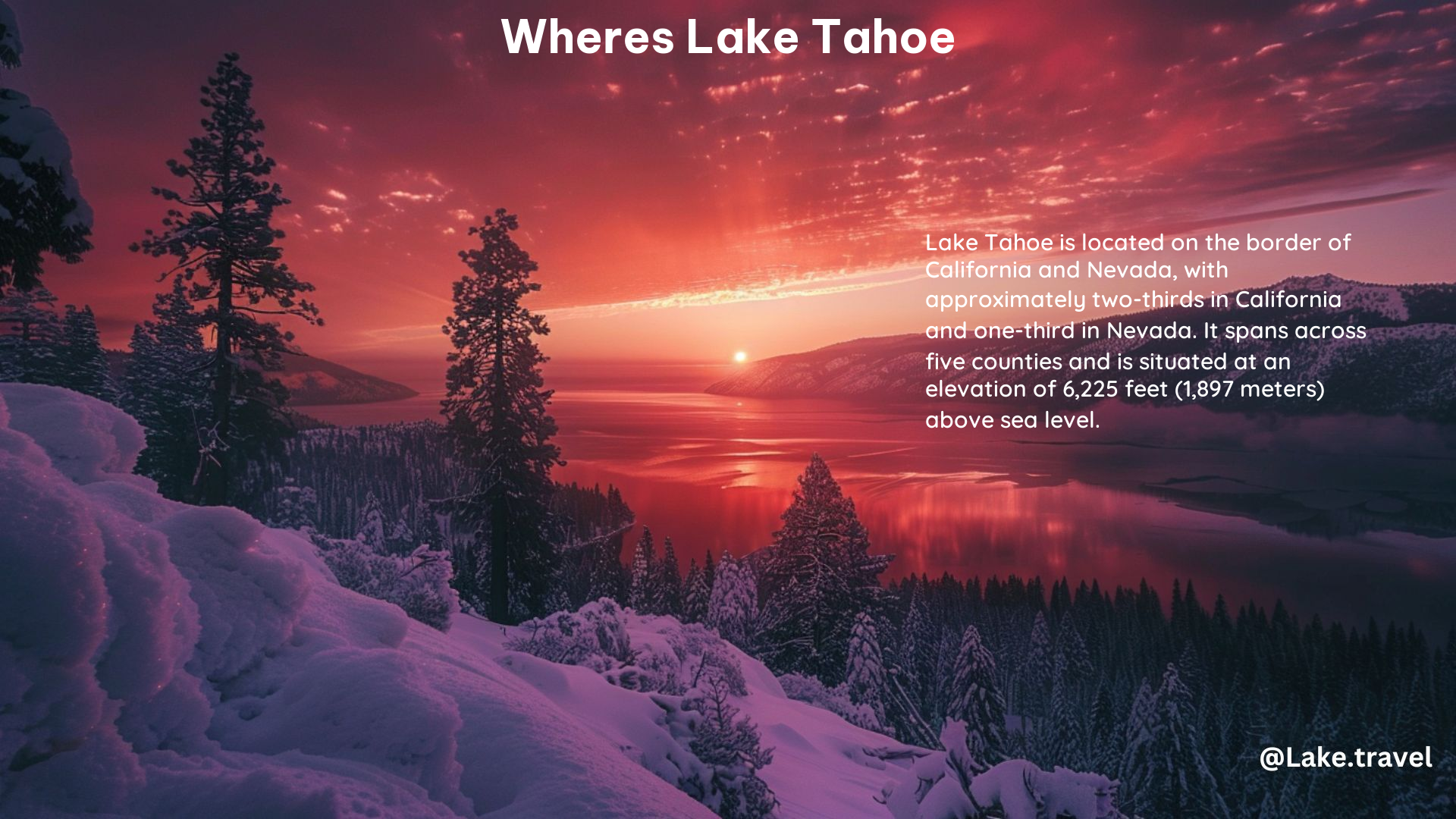Lake Tahoe, the jewel of the Sierra Nevada mountains, is a breathtaking natural wonder that straddles the border between California and Nevada. Nestled at an elevation of 6,225 feet (1,897 meters), this alpine lake is a prime destination for outdoor enthusiasts and nature lovers alike.
Geographical Location
Lake Tahoe is situated at the following geographical coordinates:
- Latitude: 39.1° N
- Longitude: 120.0° W
This strategic location places the lake within the heart of the Sierra Nevada mountain range, surrounded by towering peaks, lush forests, and pristine wilderness.
Size and Depth

As the largest alpine lake in North America, Lake Tahoe is truly a sight to behold. It measures an impressive 22 miles (35 kilometers) in length and 12 miles (19 kilometers) in width, with a maximum depth of 1,645 feet (501 meters) and an average depth of 989 feet. This makes it the second-deepest lake in the United States, surpassed only by Crater Lake in Oregon.
Shoreline and Surroundings
The lake’s shoreline stretches for a total of 72 miles (116 kilometers), with approximately two-thirds located in California and the remaining one-third in Nevada. The surrounding area is renowned for its natural beauty, featuring a diverse landscape of mountains, forests, and scenic trails that offer endless opportunities for outdoor exploration.
Popular Areas
Lake Tahoe is divided into two main shores: North Lake Tahoe and South Lake Tahoe. Each area has its own distinct character and offerings:
North Lake Tahoe
Known for its more laid-back atmosphere, North Lake Tahoe is a haven for those seeking a peaceful and serene getaway. This region is home to charming towns, quaint resorts, and a variety of outdoor activities, including hiking, kayaking, and skiing.
South Lake Tahoe
In contrast, South Lake Tahoe is the more lively and vibrant side of the lake. This area is a hub for recreational activities, shopping, dining, and entertainment, with a wide range of casinos, resorts, and attractions catering to visitors.
Access and Activities
Visitors can access Lake Tahoe via several major highways, including Interstate 80, U.S. Route 50, and California State Route 89. Once there, they can enjoy a vast array of outdoor activities, such as swimming, kayaking, scuba diving, skiing, snowboarding, and hiking. The lake is also surrounded by state parks and resorts, offering amenities like picnic areas, boat launches, and accommodations.
Environmental Efforts
Recognizing the importance of preserving the lake’s delicate ecosystem, various environmental efforts are underway. This includes mandatory watercraft inspections to prevent the spread of aquatic invasive species, as well as ongoing initiatives to maintain the lake’s exceptional water clarity and overall ecological health.
Tourism and Economy
Lake Tahoe is a significant tourist destination, attracting visitors from around the world who come to experience its natural beauty and diverse recreational opportunities. The area’s economy is heavily reliant on tourism, with a focus on winter sports, outdoor recreation, and scenic attractions.
Interesting Facts
- Lake Tahoe is often referred to as “The Jewel of the Sierra” due to its exceptional water clarity.
- The lake was formed approximately two million years ago and has been a culturally and spiritually significant site for the Washo people.
- The surrounding area is home to several casinos, resorts, and ski resorts, making it a popular destination for entertainment and outdoor activities.
Whether you’re a nature enthusiast, a water sports enthusiast, or simply someone who appreciates the beauty of the great outdoors, Lake Tahoe is a must-visit destination that offers an unforgettable experience.
References:
– Travel Nevada – Lake Tahoe
– Visit Lake Tahoe
– Lake Tahoe Nevada State Park
– Wikipedia – Lake Tahoe
